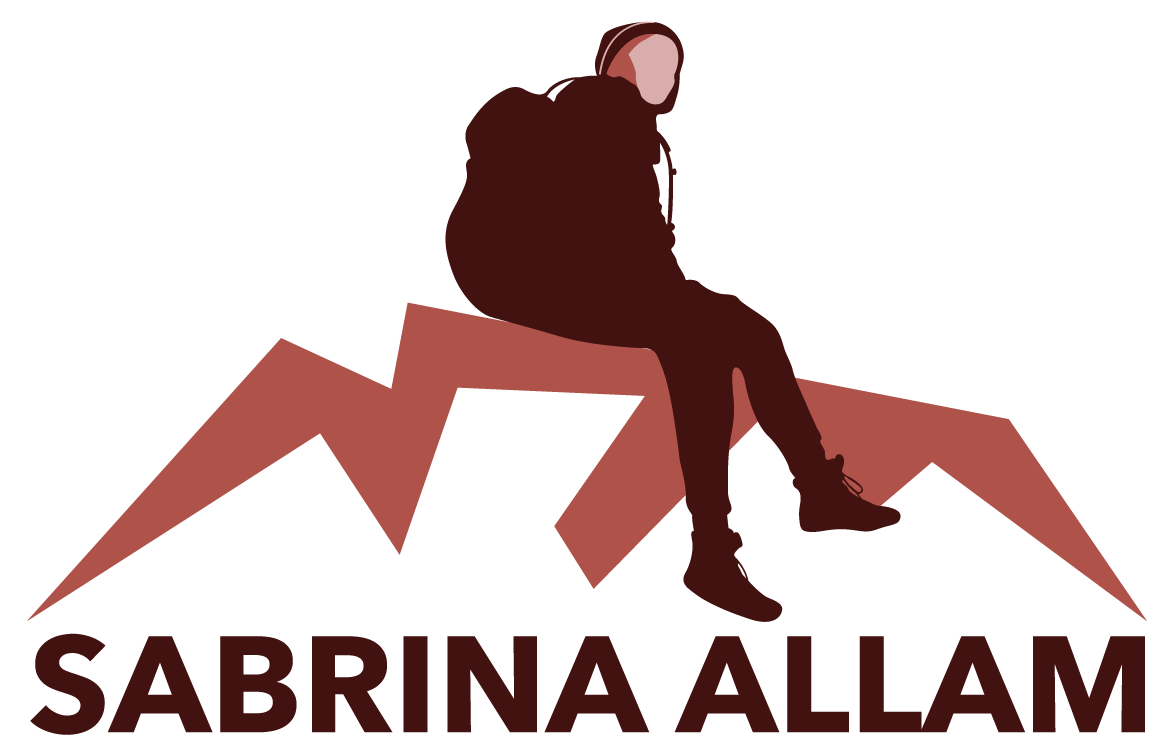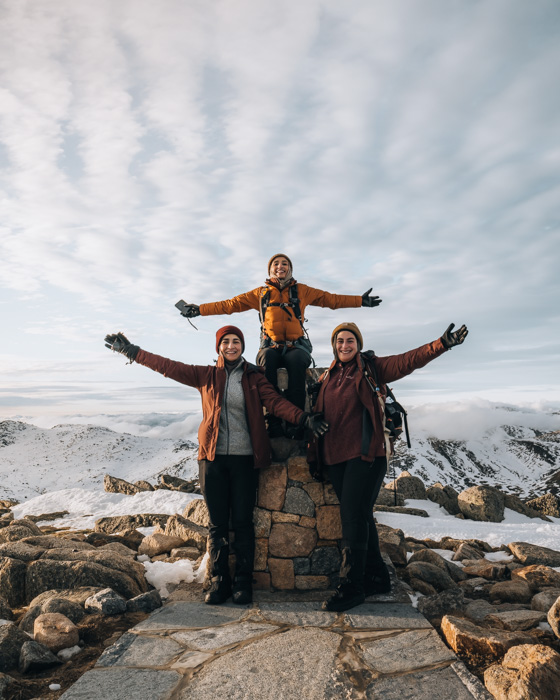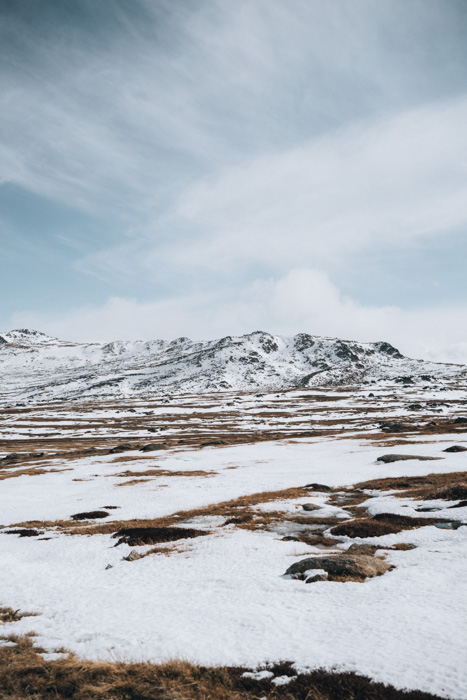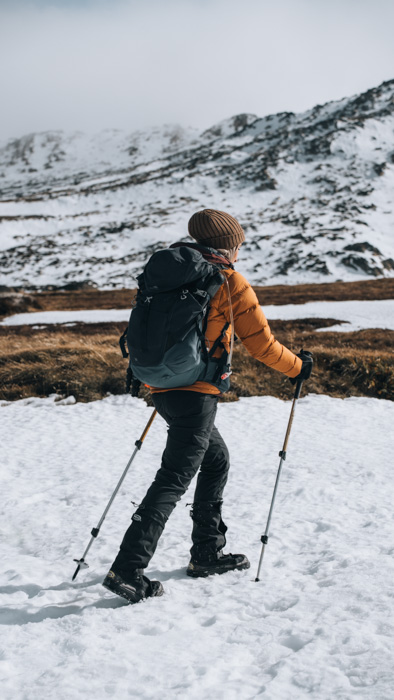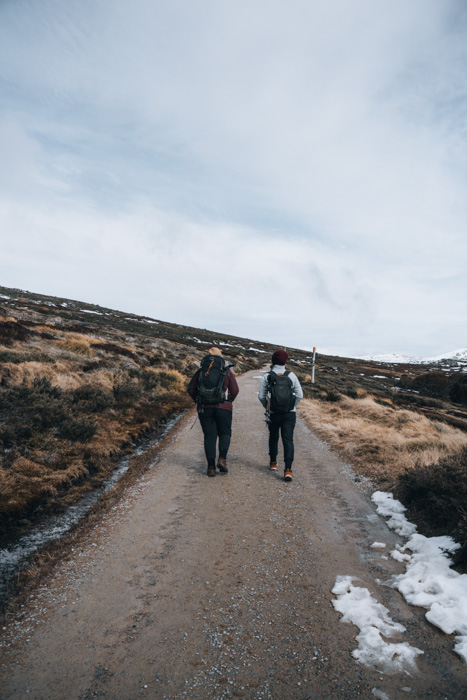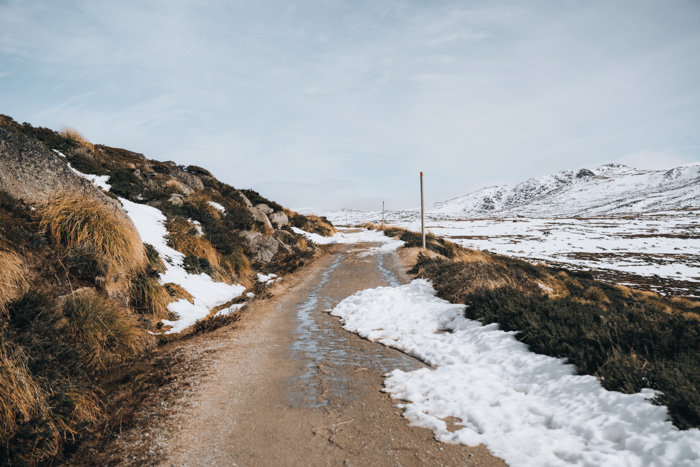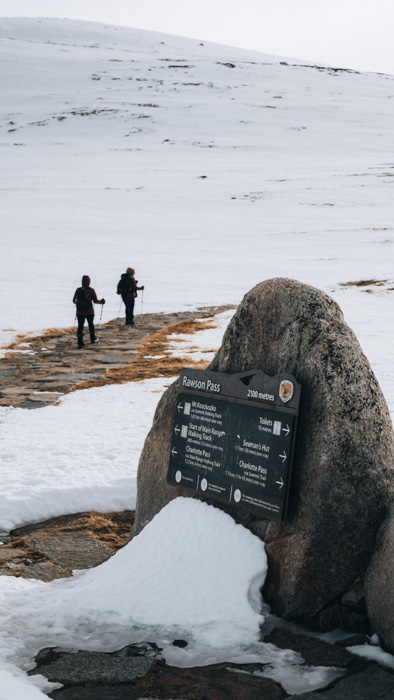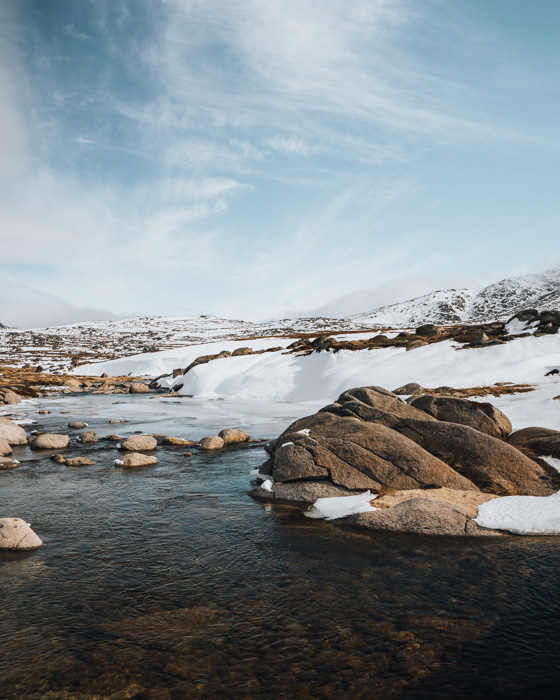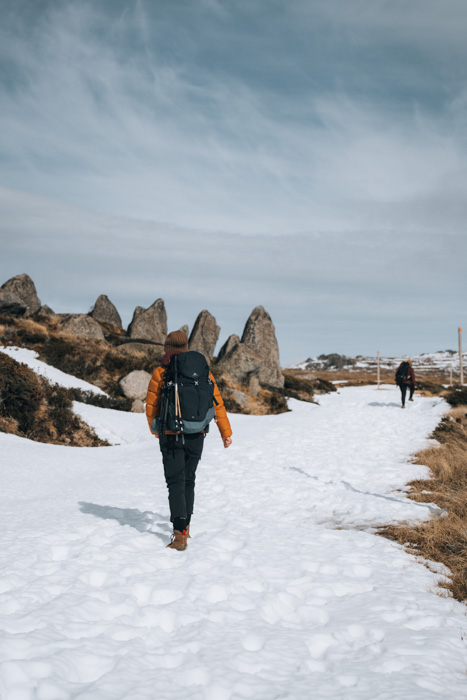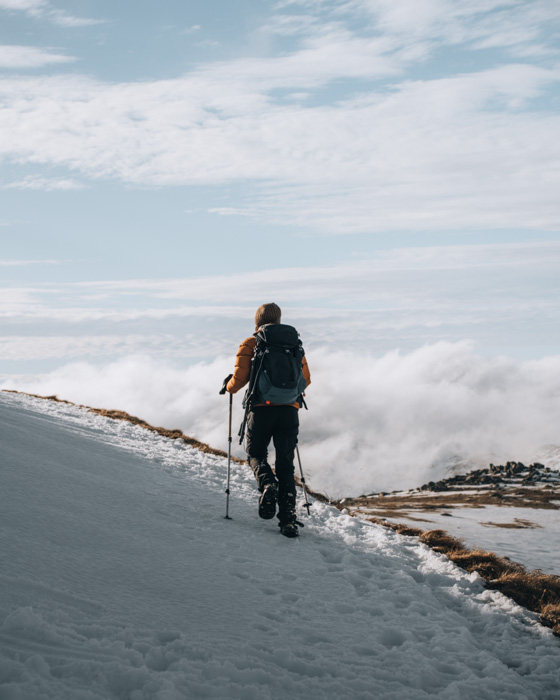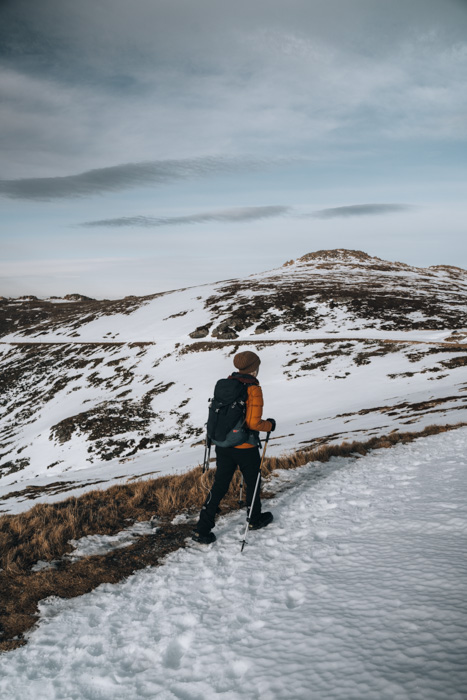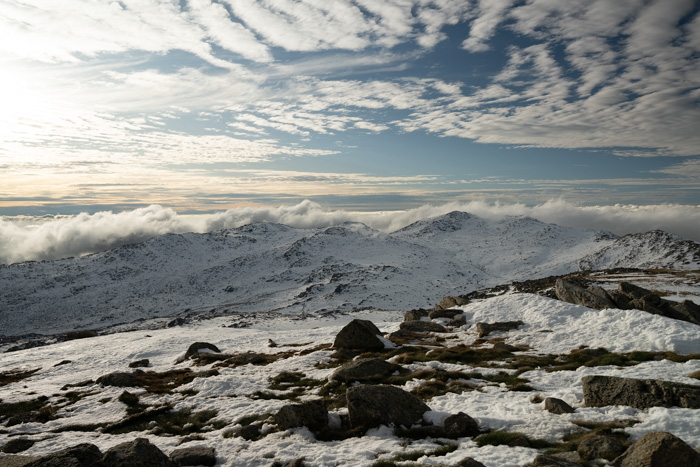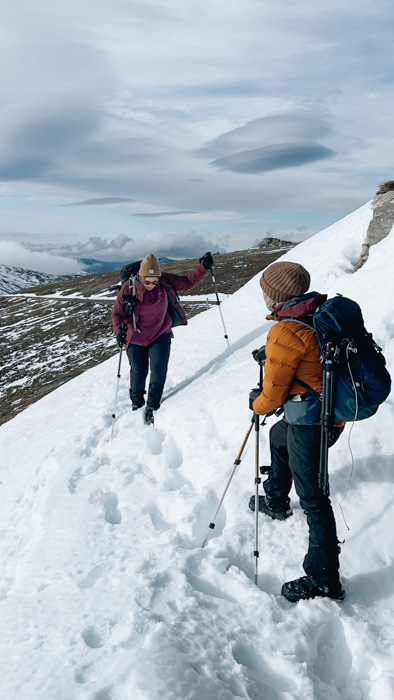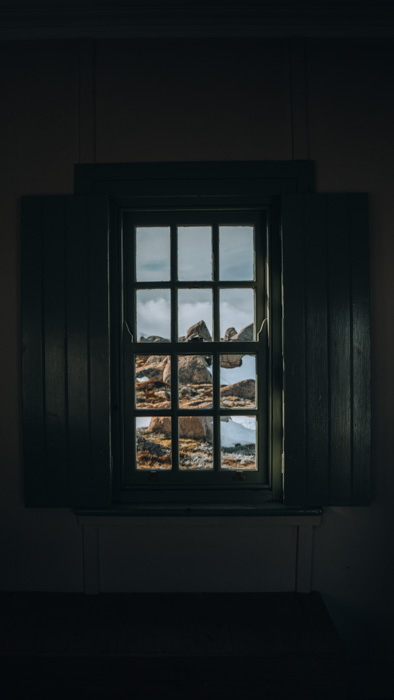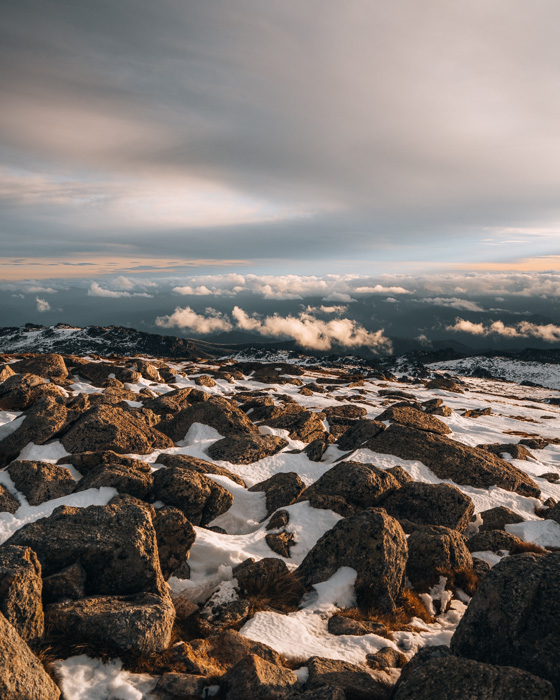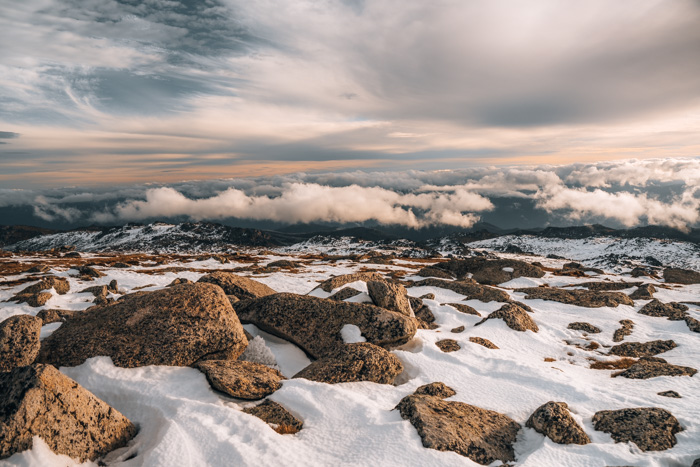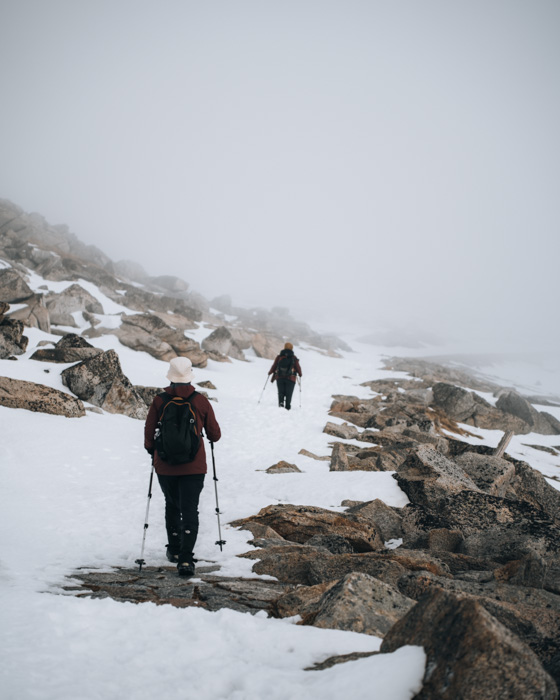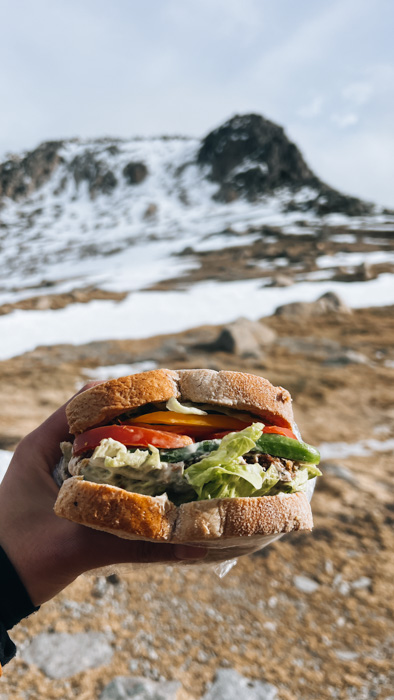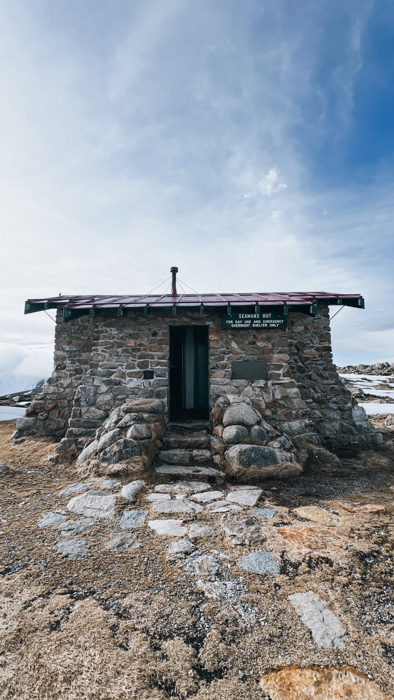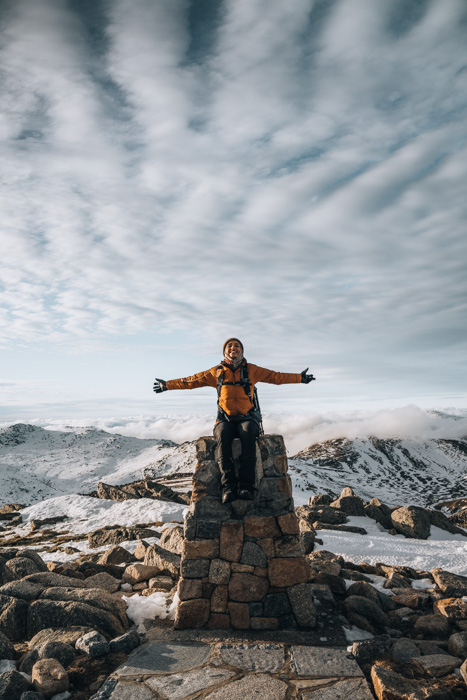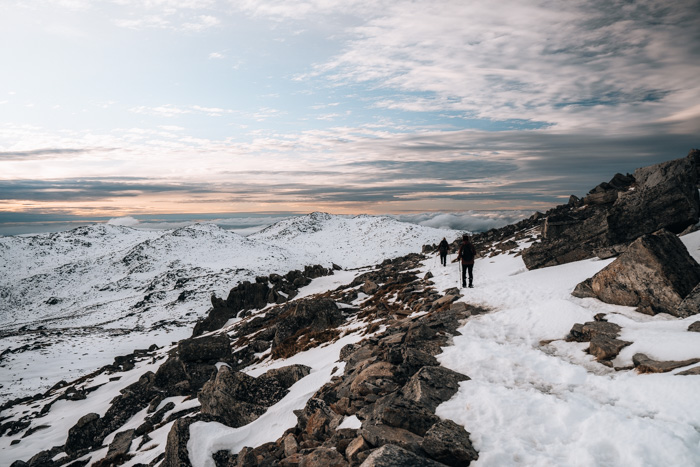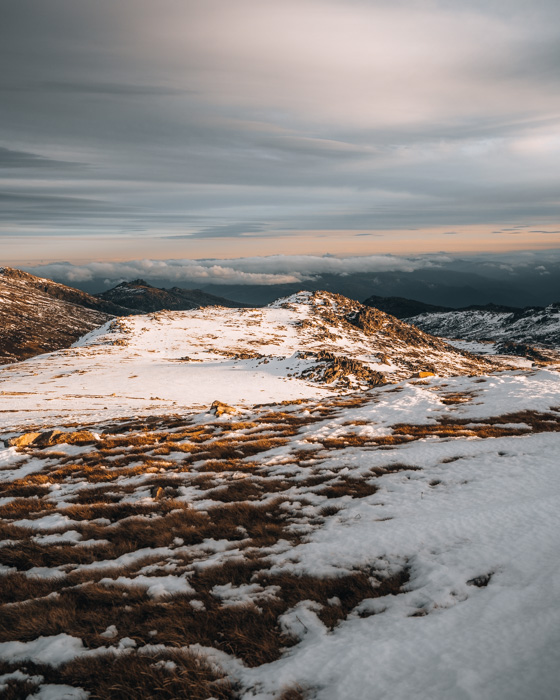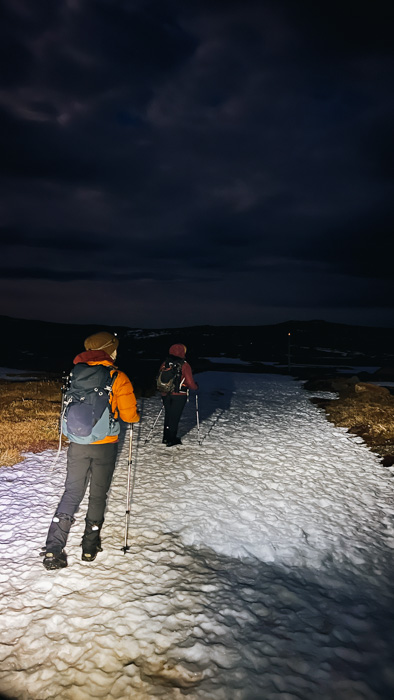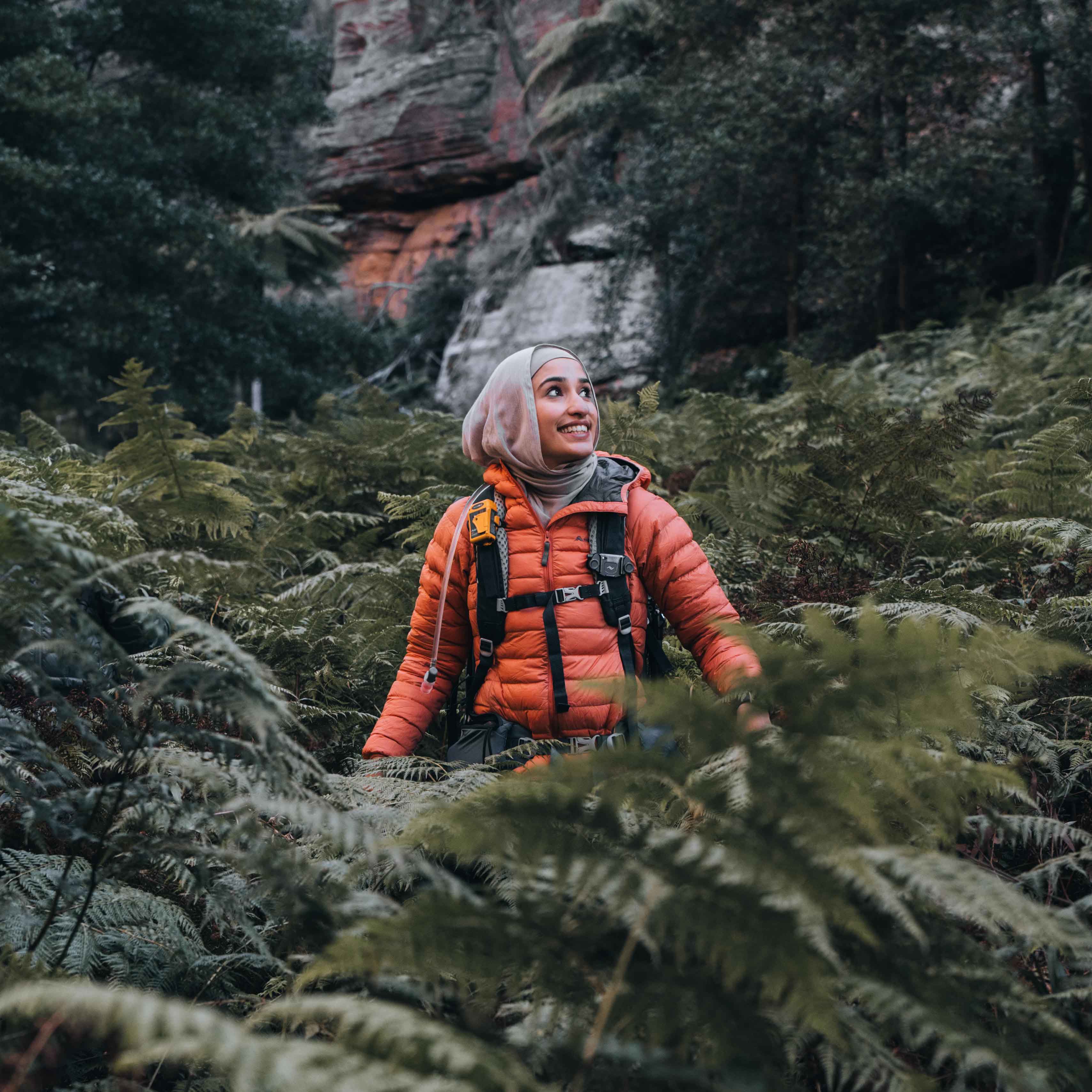This was one of those hikes I’ll never forget. We took on the 19 km return trail from Charlotte Pass to the summit of Mt Kosciuszko in early June , right as the snow started to properly settle in. It was cold, slow-going, and honestly kind of tough at times. But also really, really special.
Getting the Right Gear
We stopped by Wilderness Sports before the hike to figure out what gear we’d actually need. I wasn’t sure if we’d need snowshoes, overshoes, or if boots would be enough. They explained it depends on the conditions, if the snow is soft and deep, go for snowshoes. If it's more packed or icy, overshoes can give you warmth and grip. For this trip, they suggested overshoes, and it was the right call.
We saw a few people turn back early because they weren’t prepared. The track looks manageable at first, but once the snow hits, it becomes hard to walk in ordinary boots. Having the right gear made all the difference.
The Hike
Of course, snow conditions will vary depending on when you go. For us, we hiked on the first day of winter, and the first 3 km were totally clear — easy trail with no snow. Then it kicked in, and we strapped on the overshoes. They helped straight away, better grip, and kept our feet warm. Around the 6 km mark we took a break at Seamans Hut, had snacks, layered up, and got ready for the summit push.
From there, the trail gets more exposed. Navigating the next sections required extra caution, especially in sections where a slip could have serious consequences due to the steep slopes. We took our time and stuck to the safest paths.
Reaching the Summit
We made it to the summit just in time for sunset. It was freezing, but the view? Worth every single step. The light hit the snow-covered peaks in that golden kind of way that makes you forget how tired you are.
The way back down was in the dark, but it felt peaceful. Headlamps on, stars out, and the trail completely quiet. We wrapped up the full hike in about 8 hours, including breaks. You could definitely do it quicker if you’re not stopping every five minutes to take photos like we were.
When to Go
If you want mild weather and wildflowers, go between December and March. But if you’re after the snow experience and quieter trails, winter is incredible, just be prepared for a much tougher hike.
A Few Tips for Winter Hikes
- Do your research: Speak to local experts like Wilderness Sports or Snowy Mountains Backcountry if you’re unsure what gear you need. Or book a guided snowshoe tour if you’re not confident going solo.
- Layer properly: It can go from sunny to snowstorm real fast up there. Bring thermals, waterproof layers, gloves, and a warm beanie.
- Pack a PLB: Personal Locator Beacons are a must for remote hikes in case of emergencies.
- Navigation gear: Don’t rely only on your phone , pack a map and compass too.
- First aid & food: Always bring a solid first aid kit, extra food, and more water than you think you’ll need.
- Let someone know your plan: Always. Especially in snow conditions.
- Sun protection: Snow reflects sunlight like crazy , sunscreen, sunglasses, and SPF lip balm are non-negotiable.
Final Thoughts
Snow hiking to Mt Kosciuszko isn’t your average walk in the park. It’s slower, colder, and way more effort, but also kind of magical. There’s something about hiking through snow, with barely anyone else around, that makes the summit feel even more special.
With the right prep and gear, it’s 100% doable. Just take it slow, know your limits, and don’t be afraid to turn back if conditions shift.
This one will stay with me for a long time.
